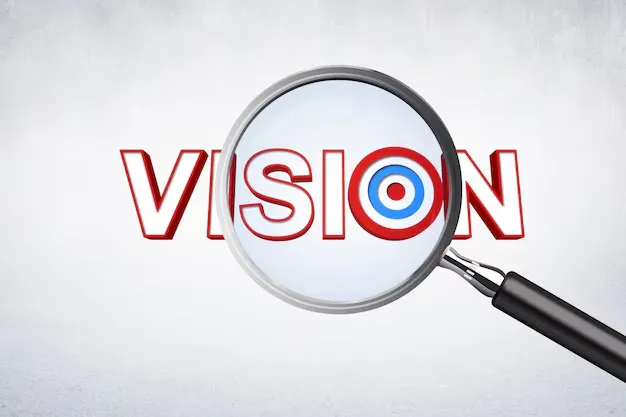In an increasingly competitive global marketplace, businesses must consistently innovate and adapt to sustain productivity. While many organizations have mission statements, creating a master vision is a more comprehensive approach that unites long-term strategic thinking with actionable goals. This master vision not only acts as a guiding framework but also directly influences productivity by aligning everyone towards the same objectives.
This article will present a unique take on how organizations can design, implement, and sustain a master vision that ensures productivity remains at the forefront.
Why a Master Vision is Essential for Modern Organizations
In contrast to traditional strategic planning that often focuses on financial metrics or operational improvements, a master vision is a transformative tool. It encompasses not only business objectives but also the underlying philosophy that defines how an organization approaches challenges, innovation, and growth.
A master vision:
- Creates alignment across departments, preventing siloed thinking and ensuring all functions support broader goals.
- Boosts engagement by giving every employee a sense of purpose and direction.
- Guides decision-making, reducing the time wasted on initiatives that do not contribute to long-term growth.
The question isn’t just what your organization does, but why it exists and how it wants to achieve its future ambitions.
1. Establishing a Forward-Thinking Purpose: It’s More than Profits
Redefining Productivity Beyond Outputs
Productivity is often measured solely by output—the more tasks completed, the more efficient an organization is deemed to be. However, this outdated approach fails to capture the evolving nature of modern businesses. Today, purpose-driven productivity focuses on meaningful work that aligns with the organization’s larger vision.
The foundation of any master vision should be a well-defined purpose that goes beyond profitability. This purpose acts as the core driver for both employee motivation and company strategy. When the workforce is inspired by a mission that contributes to societal good or innovation, their work becomes more impactful, increasing engagement and productivity.
Actionable Step: Create a Purpose Framework
- Develop a framework that outlines why the organization exists, how it plans to contribute value beyond products or services, and how employees can personally align their work with this vision.
- Conduct regular workshops to remind teams of the overarching purpose and encourage alignment with day-to-day activities.
- Integrate this framework into employee performance evaluations to connect personal achievements with the company’s larger goals.
- Create visual representations of the purpose (e.g., posters, dashboards) to reinforce the message throughout the organization.
2. Future-Proofing Through Visionary Leadership: Leading for Tomorrow
Empowering Leadership Beyond Immediate Goals
Visionary leadership is crucial in crafting a master vision. Leaders must not only articulate long-term ambitions but also have the foresight to anticipate industry shifts and market disruptions. The master vision should be designed with future scalability in mind, ensuring that as the market evolves, the organization is prepared to adapt and innovate.
Leadership should:
- Foster innovation by encouraging teams to experiment with new approaches, technologies, and solutions.
- Anticipate trends: Leaders must keep an eye on emerging technologies, changing customer behaviors, and evolving business models that could influence the company’s future.
Actionable Step: Establish Visionary Leadership Development Programs
- Create leadership programs that emphasize strategic thinking, trend analysis, and adaptability.
- Establish an internal mentorship system where senior leaders mentor emerging talent on visionary leadership.
- Encourage leaders to join industry forums and networks to stay updated on trends and innovations.
- Set quarterly leadership meetings focused on long-term planning rather than short-term issues.
- Implement leadership scorecards that track progress on innovation, adaptability, and strategic foresight.
3. Building Productivity Frameworks That Scale
Customized Productivity Models for Different Teams
Every department in an organization has unique responsibilities, and a one-size-fits-all approach to productivity is rarely effective. Instead, productivity frameworks should be tailored to the unique needs and processes of each team, while still aligning with the overarching vision.
For instance, while an R&D team’s productivity may be measured in terms of innovation or new product development, a sales team’s productivity could be measured through client engagement or revenue growth. The challenge lies in creating a productivity model that reflects these differences yet drives towards the same overarching vision.
Actionable Step: Create Tailored Productivity Metrics
- Define productivity metrics that are specific to each department’s role in the master vision.
- Use both quantitative (output-based) and qualitative (impact-based) measures to gauge productivity.
- Collaborate with department heads to adjust productivity metrics annually based on changes in goals.
- Introduce cross-departmental KPIs that ensure collaboration while maintaining individual department goals.
4. Foster a Culture of Psychological Safety for Innovation
Innovation Thrives Where Failure is Accepted
For a master vision to be effective, employees must feel comfortable taking risks and proposing new ideas without fear of failure. Fostering a culture of psychological safety is key to unlocking creativity and driving productivity.
In an environment where experimentation is encouraged, employees can test new ideas, iterate on failures, and ultimately arrive at more effective solutions. Without this safety net, companies risk stifling innovation and stagnating.
Actionable Step: Promote Psychological Safety
- Reward experimentation: Recognize employees for taking calculated risks, even when they don’t succeed. Highlight these efforts as learning opportunities.
- Encourage open dialogue: Develop a communication culture where employees can share ideas without hierarchical barriers.
- Provide training for managers to create a psychologically safe environment where employees feel their contributions are valued.
- Implement a “fail fast, learn faster” initiative where employees share what they learned from unsuccessful projects.
5. Integrate Flexible, Dynamic Workflows
Agile and Hybrid Models for the Modern Workforce
In today’s fast-paced environment, static workflows can stifle productivity and make it difficult for employees to respond to changes in demand or strategy. The most productive organizations are those that adopt agile methodologies and flexible working arrangements.
A master vision that prioritizes flexibility in workflows allows teams to pivot quickly when priorities shift, ensures that resources are allocated efficiently, and reduces downtime between projects. Hybrid work models, where employees have the freedom to work both in-office and remotely, have proven particularly effective in boosting both employee morale and productivity.
Actionable Step: Implement Dynamic Workflow Models
- Adopt agile methodologies: Break down large projects into smaller, manageable tasks that can be quickly adapted based on new information or shifting priorities.
- Empower remote work: Provide employees with the tools and technology needed to work productively from anywhere, fostering a culture of trust and autonomy.
- Rotate team members through different roles to encourage dynamic workflow understanding and flexibility.
- Track workflow efficiency using project management software to ensure quick adjustments can be made when bottlenecks arise.
6. Incorporate Technology to Automate and Enhance Productivity
Leveraging AI and Automation for Smarter Workflows
One of the most significant ways a master vision can drive productivity is by integrating advanced technologies such as artificial intelligence (AI) and automation. These tools help streamline processes, reduce manual tasks, and free up time for employees to focus on high-impact activities that drive innovation.
AI-powered analytics can offer insights into employee performance, project timelines, and potential bottlenecks, allowing leaders to make data-driven decisions that improve efficiency. Meanwhile, automation can handle routine, time-consuming tasks, enabling the workforce to focus on creative problem-solving.
Actionable Step: Implement AI and Automation Tools
- Identify manual processes across departments that can be automated, and invest in the right tools to streamline them.
- Use AI-driven analytics to predict project outcomes and productivity trends, enabling proactive management decisions.
- Establish AI-driven customer support systems to handle routine queries, allowing employees to focus on complex issues.
- Develop a training program to upskill employees on the use of AI and automation tools.
- Monitor the effectiveness of AI implementations and refine them continuously based on feedback.
7. Prioritize Employee Well-Being to Sustain Productivity
Well-Being as a Core Component of the Vision
An organization cannot achieve long-term productivity without addressing employee well-being. Burnout and disengagement are major threats to sustained productivity, and companies that prioritize mental and physical well-being are better positioned to succeed.
Well-being initiatives can be integrated into the master vision by treating employee health as a core business asset. This means creating policies that support work-life balance, offering mental health resources, and designing workspaces that promote physical health.
Actionable Step: Create a Well-Being Program Aligned with the Vision
- Offer flexible work hours and mental health days to help employees maintain balance.
- Introduce workplace wellness initiatives, such as regular physical activities, healthy snacks, and ergonomic workstations.
- Develop a digital platform for employees to access wellness resources, including mental health support and fitness plans.
- Conduct quarterly well-being surveys to assess employee health and make improvements where necessary.
- Create peer support groups where employees can discuss challenges and find solutions collaboratively.
8. Real-Time Feedback Loops and Data-Driven Adaptation
Continuous Improvement via Feedback
A master vision is not static—it must evolve as the organization grows. Real-time feedback loops are critical in ensuring that the vision remains relevant and actionable. This feedback should come from both employees and external market conditions.
Leaders can use real-time data analytics to monitor progress, identify areas of friction, and adjust strategies accordingly. Similarly, employees should have regular opportunities to provide feedback on how well the vision aligns with their daily work and offer suggestions for improvement.
Actionable Step: Establish Real-Time Feedback Systems
- Use pulse surveys and regular check-ins to gather feedback from employees on workflow effectiveness and organizational strategy.
- Leverage analytics tools to assess productivity trends, track employee engagement, and identify bottlenecks in real-time.
- Create a structured system for employees to submit suggestions for improvement.
- Implement regular reviews of feedback to adapt the vision and productivity frameworks.
Conclusion
Creating a master vision is not a one-time task, but a continuous journey of alignment, innovation, and adaptation. By defining a forward-thinking purpose, empowering leaders to think strategically, and integrating the latest in technology and flexible work models, organizations can significantly boost productivity and remain competitive in an ever-changing landscape.
The key is ensuring that every part of the organization, from leadership to front-line employees, is engaged in making this vision a reality. When executed correctly, a master vision not only drives immediate productivity gains but also ensures sustained growth, innovation, and success in the long run.

